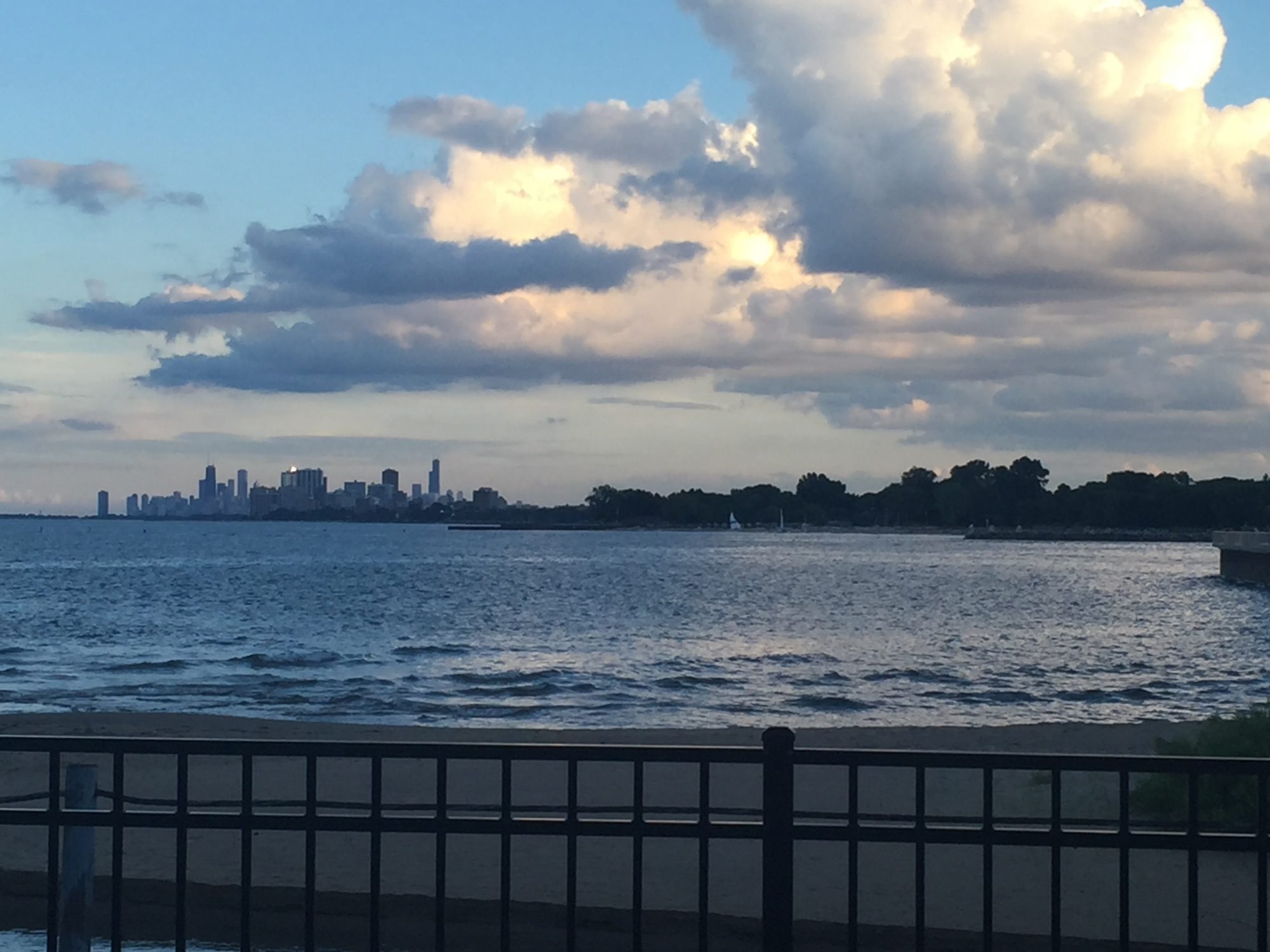This summer I had the opportunity to attend the Design for America Leadership Studio at Northwestern University with an amazing leadership team (Piper, Laurel, and Kristen) thanks to the Changemaker Catalyst Award. In anticipation of launching our new DFA studio at Tulane, here is a little more about my experience.
Piper admiring some amazing designs
I’ve always considered myself a pretty creative person.
In school growing up, I could whip out a poster or a diorama like nobody’s business, so going into college I was searching for an outlet where I could hone my creativity and utilize it to solve problems. In addition to lots of research papers and studying, I was imagining this “college experience” where post-it notes littered the walls and people were able to exchange ideas in a progressive and impactful manner. I was so excited when I found this environment at the Taylor Center in my Intro to SISE class second semester of my freshman year. When we were introduced to the concept of design thinking, I was hooked.
Fast forward to the end of the semester, I had heard about the efforts to create a Design for America studio at Tulane and decided that I wanted to be a part of the leadership team. Admittedly, I went into the process a little oblivious. My exposure to design thinking consisted of an hour long intro in my SISE class and one awesome crash course at the Taylor Center, and I was nervous to attend a 5-day workshop all about human-centered design with students from other schools who had much more experience with it.
Showing off our awesome new DFA water bottles by Lake Michigan
DFA Leadership Studio ’16 Our week at Northwestern was filled with non-stop engagement. Immediately when we arrived, we began talking to other studios, and I could tell that this was going to be unlike any experience I’ve had before. All of the leaders from different schools were so excited to share their ideas and advice on launching our new DFA Studio. Their openness was inspiring, and I automatically felt that I could share my thoughts without passing judgment on myself or be worrying about how others might perceive me.
We were divided into teams to approach the question how can we improve the voting process. Utilizing the DT process, my team decided to focus on civic engagement at a local level. My favorite part of the design thinking process was interviewing a variety of different people from the local community to better understand the issue and the people affected by it. Mountains of post-it notes later, we came up with our solution that, after user trials, we ended up iterating and reiterating.
Our very colorful design process
The design process is messy. In my previous exposure to DT, I’ve heard that the process isn’t linear. It’s continual and changing and it’s more of a tangled web than a straight line. It’s also piles of post-it notes and grouping and connecting and playing with play-doh to come up with ideas. It’s unorganized in a very organized way, and there is never a final product or solution because there’s always a more efficient and effective approach.
It’s okay to have bad ideas. And, in truth, no idea is ever bad. That’s just your judgment labeling it. Sometimes you have to consider quantity over quality to find the one idea that stands out among the rest. And even then, that idea will take so many different approaches and iterations.
Everyone has unique knowledge to contribute. Probably the best thing about my team was that we all had different ways of looking at things. Because of that, we were able to look at the problem from all different angles and come up with well-rounded approaches to improve the voting process. I learned so much from my teammates, and I felt that I had valuable ideas to contribute too.
Laurel exhausted after a long and exciting day of ideating
I went into the experience with not a lot of confidence in my critical thinking skills or design thinking skills, but at the Leadership Studio, I learned how to effectively communicate my ideas and introduce and develop new ideas as well. I am so excited to launch our new DFA studio at Tulane. It will be a great way to step outside of the classroom and actively engage in the design thinking process by using it to create social impact in the Tulane and New Orleans community.




